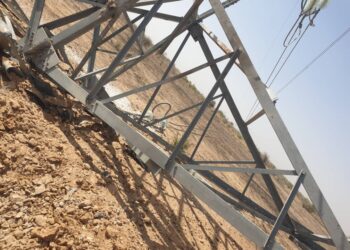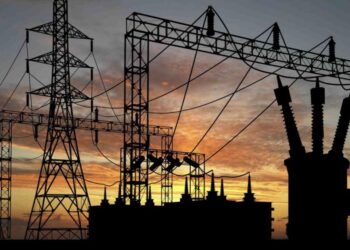- The Nigerian Electricity Regulatory Commission (NERC) reported that there were no national grid collapses in the fourth quarter of 2022, as stated in its latest quarterly report.
- The report highlighted an improvement in the electricity supply during this period, attributing it to the efforts of the system operator (SO) in preventing grid collapses, which were previously frequent occurrences.
- The NERC’s findings indicate a positive trend in grid stability and electricity supply management, resulting in a period without any significant disruptions in the national grid.
The Nigerian Electricity Regulatory Commission (NERC) has said that the country did not record any national grid collapses in the fourth quarter of 2022.
The Commission stated this in its latest quarterly report.
According to the report, there was an improvement in electricity supply during the highlighted period and the system operator (SO) worked to ensure that there were no grid collapses, which occurred often before the highlighted period. A part of the report stated:
- “It is noteworthy that there was no grid collapse in 2022/Q4. The Commission, in collaboration with the TCN, will continue to intensify efforts to sustain the improvements in grid stability and prevent system collapses.
- “Furthermore, the Commission shall continue to strictly monitor compliance with the system operator’s directives to generators on the free governor and frequency control mode in line with the provisions of the subsisting operating codes in the electricity industry. The Commission is also exploring options for the enforcement of under frequency load-shedding scheme instituted to provide an added layer of security for the grid in case of a sudden loss of generation.
- “The Transmission Company of Nigeria (TCN) could also be required to undertake a review of the calibration of its relay settings as part of the efforts to increase grid stability.”
Impact of Deviations on grid stability
The NERC report also notes that the national grid is designed to function within certain stability limits in terms of voltage (330kV±5%) and frequency (50Hz±0.5%). So, any deviation from these stability ranges can result in decreased power quality and, in severe cases, cause widespread power outages.
- This can range from a partial collapse of a section of the grid to a full system-wide blackout. The system operator is responsible for ensuring that the frequency remains within a ±0.5% tolerance threshold.
- However, when the electricity demand is higher than the supply, the grid frequency drops, which can cause some power plants to shut down automatically.
- This further exacerbates the frequency imbalance and can lead to a full or partial system collapse.
On the other hand, if supply surpasses demand, the frequency increases, and in severe cases, some power plants may shut down, causing a sudden drop in generation.
Interesting stats on Nigeria’s power generation in Q4 2022
Nigeria’s electricity is dependent on two main sources – hydropower and natural gas plants.
- According to the NERC report, hydropower experienced an increase in its share of the energy mix, rising from 29.42% (2,512.50 GWh) in 2022/Q3 to 30.98% (2,926.67 GWh) in 2022/Q4.
- The average hourly generation on the grid in Q4 2022 was 4,231.87MWh/h.
- Between Q3 2022 and Q4 2022, 16 out of the 26 grid-connected plants recorded improved average hourly generation with the biggest improvements being recorded at the following plants:
- Kainji (+147.97MWh/h/+46.01%)
- Afam VI (+98.91MWh/h/+333.91%)
- Okpai (+88.42MWh/h/+43.03%)
- Geregu (+44.09MWh/h/+54.71%).
In Q4 2022, gas unavailability resulted in reduced generation from the following plants:
- Geregu NIPP (97,201.07MWh)
- Olorunsogo (176,090.50MWh)
- Omotosho NIPP (106,295.57MWh)
- Rivers IPP (156,890.67MWh).
What you should know: On Monday, June 26, Egbin Power PLC announced via its social media account that the company had hit 1000 megawatts (MW) of power generation capacity.
























